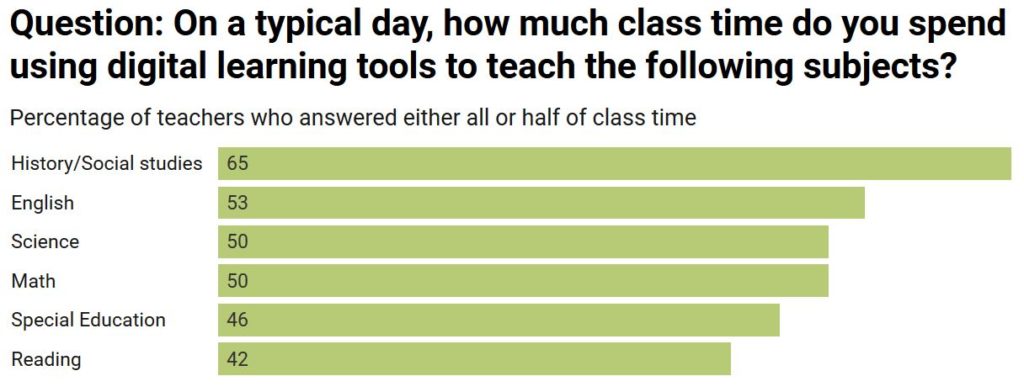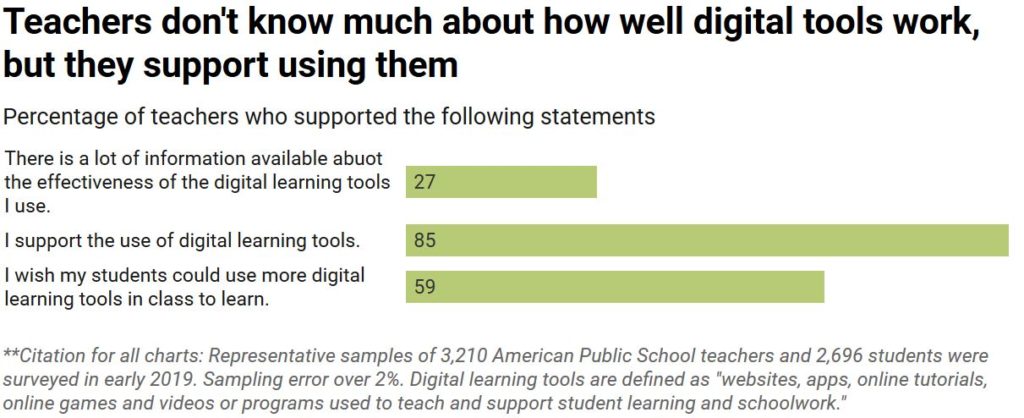![]() By B.N. Frank
By B.N. Frank
It’s dumb. Public school administrators and educators are still pushing for “high tech” curriculums when experts continue to warn against them and kids aren’t benefiting from them (see 1, 2, 3, 4). Health warnings about exposure to Blue Light from LED screens (see 1, 2, 3. 4) and cell phone radiation and WiFi from devices are increasing as well. Excessive screen use, addiction and reliance are increasing too – in the classroom and out.
Silicon Valley parents – including Bill Gates and the late Steve Jobs – must have at least suspected that tech wasn’t beneficial to kids. Otherwise, they wouldn’t have been sending their own kids to private low-tech or no-tech schools all along AND limiting their use of tech in their homes. More recently it’s been reported that some are also making their nannies sign “no screens” contracts (see 1, 2).
Thanks to MIT Technology Review for publishing this overwhelmingly detailed article about how high tech curriculums are for the most part NOT helping kids, especially those who are disadvantaged. You can read the full article here, an excerpt appears below.
Schools across the country have jumped on the education technology bandwagon in recent years, with the encouragement of technophile philanthropists like Bill Gates and Mark Zuckerberg. As older education reform strategies like school choice and attempts to improve teacher quality have failed to bear fruit, educators have pinned their hopes on the idea that instructional software and online tutorials and games can help narrow the massive test-score gap between students at the top and bottom of the socioeconomic scale. A recent Gallup report found that 89% of students in the United States (from third to 12th grade) say they use digital learning tools in school at least a few days a week.
Gallup also found near-universal enthusiasm for technology on the part of educators. Among administrators and principals, 96% fully or somewhat support “the increased use of digital learning tools in their school,” with almost as much support (85%) coming from teachers. But it’s not clear this fervor is based in evidence. When asked if “there is a lot of information available about the effectiveness” of the digital tools they used, only 18% of administrators said yes, along with about a quarter of teachers and principals. Another quarter of teachers said they had little or no information.
In fact, the evidence is equivocal at best. Some studies have found positive effects, at least from moderate amounts of computer use, especially in math. But much of the data shows a negative impact at a range of grade levels. A study of millions of high school students in the 36 member countries of the Organisation for Economic Co-operation and Development (OECD) found that those who used computers heavily at school “do a lot worse in most learning outcomes, even after accounting for social background and student demographics.” According to other studies, college students in the US who used laptops or digital devices in their classes did worse on exams. Eighth graders who took Algebra I online did much worse than those who took the course in person. And fourth graders who used tablets in all or almost all their classes had, on average, reading scores 14 points lower than those who never used them—a differential equivalent to an entire grade level. In some states, the gap was significantly larger.
A 2019 report from the National Education Policy Center at the University of Colorado on personalized learning—a loosely defined term that is largely synonymous with education technology—issued a sweeping condemnation. It found “questionable educational assumptions embedded in influential programs, self-interested advocacy by the technology industry, serious threats to student privacy, and a lack of research support.”
Judging from the evidence, the most vulnerable students can be harmed the most by a heavy dose of technology—or, at best, not helped. The OECD study found that “technology is of little help in bridging the skills divide between advantaged and disadvantaged students.” In the United States, the test score gap between students who use technology frequently and those who don’t is largest among students from low-income families. A similar effect has been found for “flipped” courses, which have students watch lectures at home via technology and use class time for discussion and problem-solving. A flipped college math class resulted in short-term gains for white students, male students, and those who were already strong in math. Others saw no benefit, with the result that performance gaps became wider.
College students who used laptops or digital devices in their classes did worse on exams. Eighth graders who took Algebra I online did much worse than those who took the course in person.
Even more troubling, there’s evidence that vulnerable students are spending more time on digital devices than their more privileged counterparts. High school students in questionable online “credit recovery” courses are disproportionately likely to be poor or members of minority groups (or both). “Virtual” charter schools—which offer online classes and generally produce dismal results—often enroll struggling students. A national charter network called Rocketship Public Schools, which serves low-income communities, relies heavily on technology, with even students in kindergarten spending 80 to 100 minutes a day in front of screens. One study found that in schools serving relatively affluent populations, 44% of fourth graders never used computers, compared with 34% in poorer areas.
The dangers of relying on technology are also particularly pronounced in literacy education and at early grade levels. Unfortunately, to judge from my observations of classrooms at high-poverty schools like the one Kevin attends, that’s exactly how and when digital devices are commonly used. The bulk of the elementary school day—three hours or more, at some schools—is spent on “reading” and the rest on math. Especially in schools where standardized reading and math scores are low, subjects like social studies and science have largely disappeared from the curriculum. And the standard class format is to have students rotate through “centers,” working independently on reading and math skills while the teacher works with a small group. In the classrooms I’ve been in, at least one of the centers always involves working on a digital device.
Activist Post reports regularly about all sources of unsafe technology. For more information, visit our archives.
Subscribe to Activist Post for truth, peace, and freedom news. Become an Activist Post Patron for as little as $1 per month at Patreon. Follow us on SoMee, Flote, Minds, Twitter, and Steemit.
Provide, Protect and Profit from what’s coming! Get a free issue of Counter Markets today.




Be the first to comment on "Another Report on How Classroom Technology Isn’t Helping Kids Even Though Educators Still Endorse It"